Kuju Report
by japan-guide.com
This is the official japan-guide.com autumn color report for 2010. Please visit also our guide to autumn leaves for more general information and our schedule of upcoming reports.
| previous post |
| next post |
2010/10/27 - Kuju Report
by francois
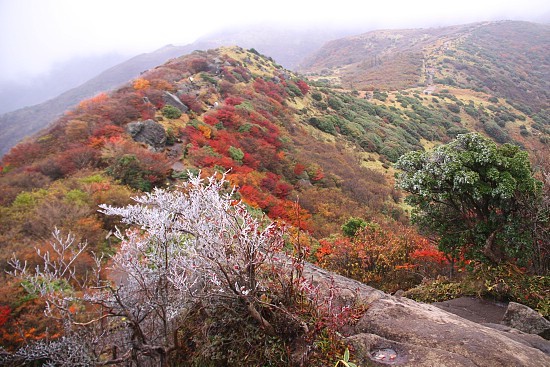
Today Schauwecker and I continued our autumn color reporting in Kyushu in Oita Prefecture's Kuju Mountains. We planned one long hike through the national park to see how the area looks during the fall colors. We started around 7 o'clock in the morning and followed a route that passed by the two highest peaks in the park, Mount Nakadake and Mount Kuju. Mount Nakadake is the highest peak on the island of Kyushu (however, the Kyushu region has a higher peak on Yakushima Island).
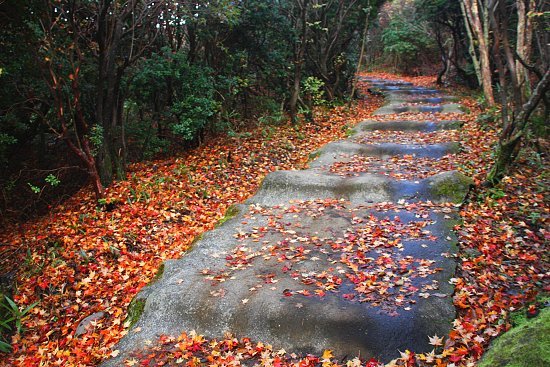
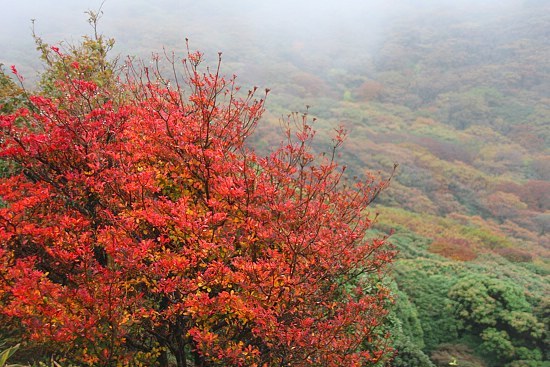
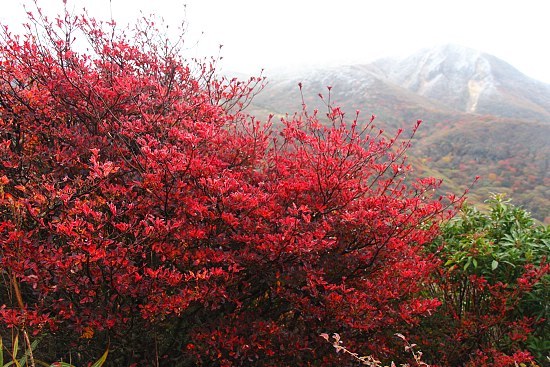
Even on the road on the way to the mountains we were able to see much more koyo than yesterday in Kirishima. As we started out on the hike our expectations were met with plenty of color. After the first ascent into the park area we were able to see many bright red and yellow trees whereas yesterday they were few and far between. The weather was extremely cold, and there was frost on some of the branches.
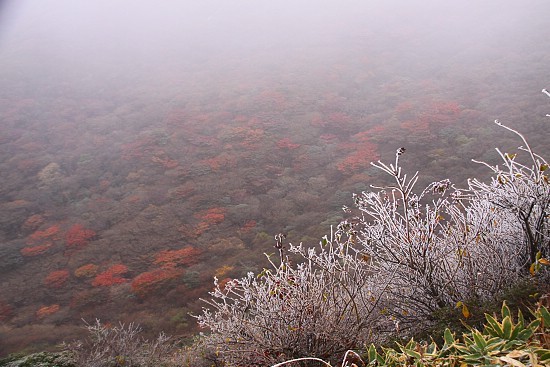
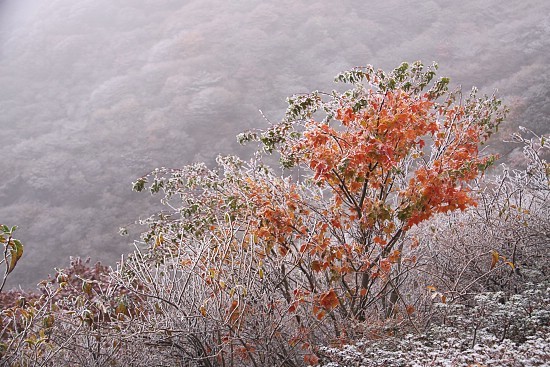

As we progressed further into the park the snow and fog became thicker so that we felt immersed in the cold. While at the entrance to the park there were many people, further into the park we crossed paths with few other hikers. On the way to Mount Nakadake we came across a mountain hut and inside a man told us that only a few hours before there had been no snow in the area. It seems as if we had come across the area's first snowfall of the year. We climbed to the peak of Nakadake, the island of Kyushu's highest point, but visibility was so bad that we could only see a few feet in front of us.
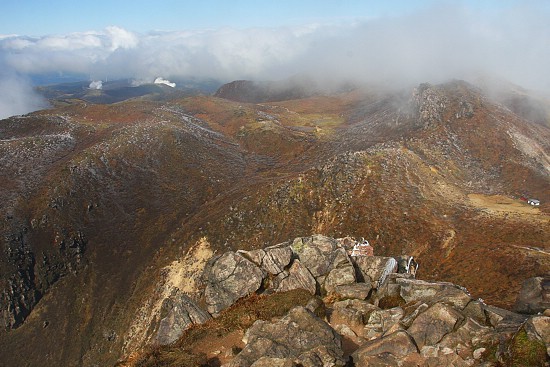
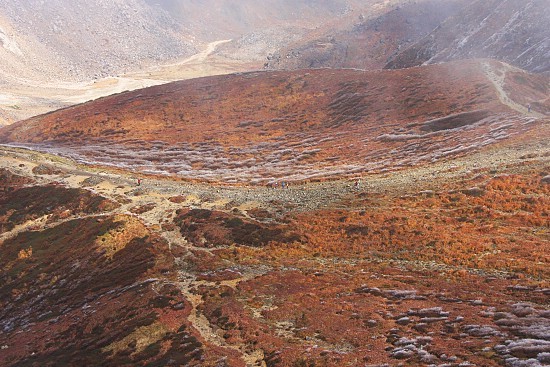
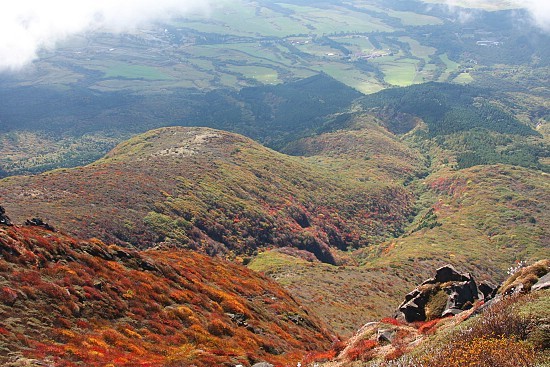
Our next destination was Mount Kuju, which is slightly lower than Mount Nakadake. We climbed to the peak and found it to be in a similarly hazy state as Nakadake. However, after we sat down to eat for a bit the fog began to disappear in certain spots and we were able to gain glimpses of the surrounding areas. All of a sudden, with a few gusts of wind, the fog disappeared almost altogether and we were suddenly able to clearly see the trail which had been shrouded in grey when we traversed it. It was quite a stroke of luck to be at the peak at that moment and to suddenly see the whole mountain around us, and Kuju has some of the best mountain scenery that I have seen in Japan. The autumn colors were certainly present in the scenery and there was a lot of red to be seen on the hillsides.
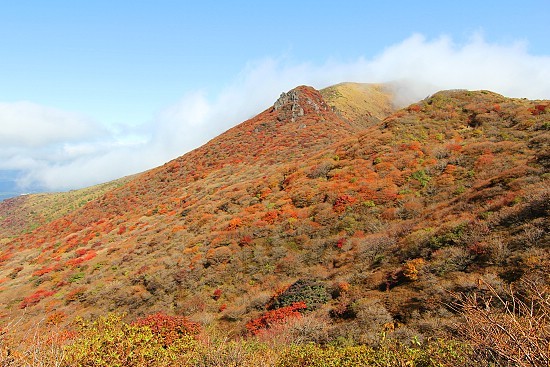


Our return trip to the trailhead was a completely different experience than our initial hike. We were able to see a lot of color and terrain that had been hidden beforehand. Much of the park is presently at its peak, and should be great to see during the next few days. Although today was a week day there was a large number of hikers exploring the park later in the day when the weather had improved. There were also a few spots near the Maki no To trailhead that had not reached their peak yet and should continue to improve over the next few days.
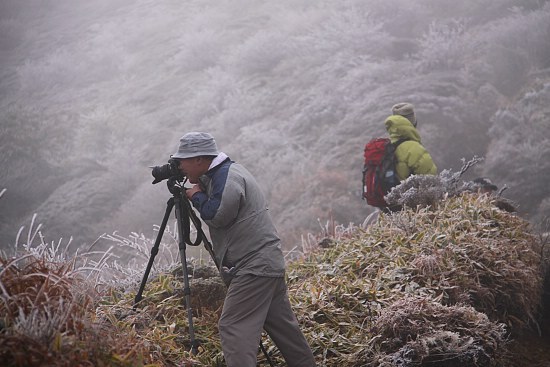

Early in the morning we passed a few areas where groups of older Japanese men were waiting with tripods and cameras despite the fact the park was shrouded in a heavy fog. On our return trip to the trailhead after the weather had improved we discovered that these areas were indeed some of the best places to get pictures of the fall colors. This proved me to once again that when one comes across a congregation of older Japanese men and tripods, you can be certain to find a good spot for picture taking.
| previous post |
| next post |
|
List of Posts:
2010/12/09 - Tokyo Report 2010/12/06 - Kamakura Report 2010/12/01 - Kyoto Report 2010/11/30 - Tokyo Report 2010/10/27 - Kuju Report 2010/09/29 - Oze Report |
Questions? Ask in our forum.


